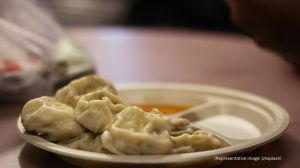Stay updated with the latest - Click here to follow us on Instagram
Expression matters
Soon after the publication of Rabindranath Tagores Gitanjali in English with an introduction by W B Yeats in 1912,came a rude shock. In a letter to his friend William Rothenstein...
60 Indian Poets celebrates the works of modern Indian English poets
Soon after the publication of Rabindranath Tagores Gitanjali in English with an introduction by W B Yeats in 1912,came a rude shock. In a letter to his friend William Rothenstein,Yeats wrote,Tagore doesnt know English,no Indian knows English. Nobody can write music and style in a language not learned in childhood and ever since the language of his thought.
Even though Yeats did not write his own poems in a language he learnt in childhood (Gaelic),says Jeet Thayil,editor of 60 Indian Poets,the celebrated poets comment was a harbinger of a debate on poets writing in a language other than their mother tongue. The book,published by Penguin,was released at a poetry-reading session hosted at Blue Frog in association with the PEN All-India Centre on Tuesday. The compilation is an attempt to present the community of post-Independence Indian poetsbased in the country and abroadwho are marginalised by the West.
Today,there are fewer instances of the authenticity a poets work being challenged for writing in his/her second language,English. Still,there exist some hostile pockets whose perception remains unchanged, says Sampurna Chattarji,whose poems are featured in the book. Even though she translates poems in her mother-tongue,Bengali,Chattarji prefers to pen her own verse in English. Her reason behind it is simple: I think in English.
The book,however,might help in changing this notion as well as expose the sub-continents poets to the western audience. Thayil chooses 1952 as the starting point for look as modern Indian poetry. Thats the year Nissim Ezekiel published his first book,A Time to Change. Until Ezekiel,Indian poetry in English was 19th-Century product that had survived well into the 20th, writes Thayil in his essay,One Language,Separated by the Sea. 60 Indian Poets has two more essays Bruce Kings 2004: Ezekiel,Moraes and Kolatkar and Arvind Krishna Mehrotras What is an Indian Poem?
The 60 poetsof them 23 are from Mumbaifor the anthology were selected from more than 100. They are presented not chronologically,but with a view to verticality, says Thayil. It features works of stalwarts like Ezekiel,Dom Moraes and Arun Kolatkarall three passed away in 2004as well as brings to the fore forgotten figures like Lawrence Bantleman,Gopal Honnalgere,Srinivas Rayaprol and G S Sharat Chandra. This anthology also introduces a range of contemporary poets. Their works are diverse not only in terms of their cultural background,but also in the use of syntax, says Chattarji.
Ranjit Hoskote,one of the 60 selected poets,feels India is experiencing a poetry boom. And thats not restricted to those writing in English language alone. Far more number of poetic works,which are finer in quality,are coming out, he says. He attributes this to a large young generation of poets (between 15 and 50) as well as multiple avenues for making their work public.
This finds ground in the fact that six from the Blue Frog crowd went up to the stage in the open-mike session and read their poems,drowning the sound of mixing of drinks.







